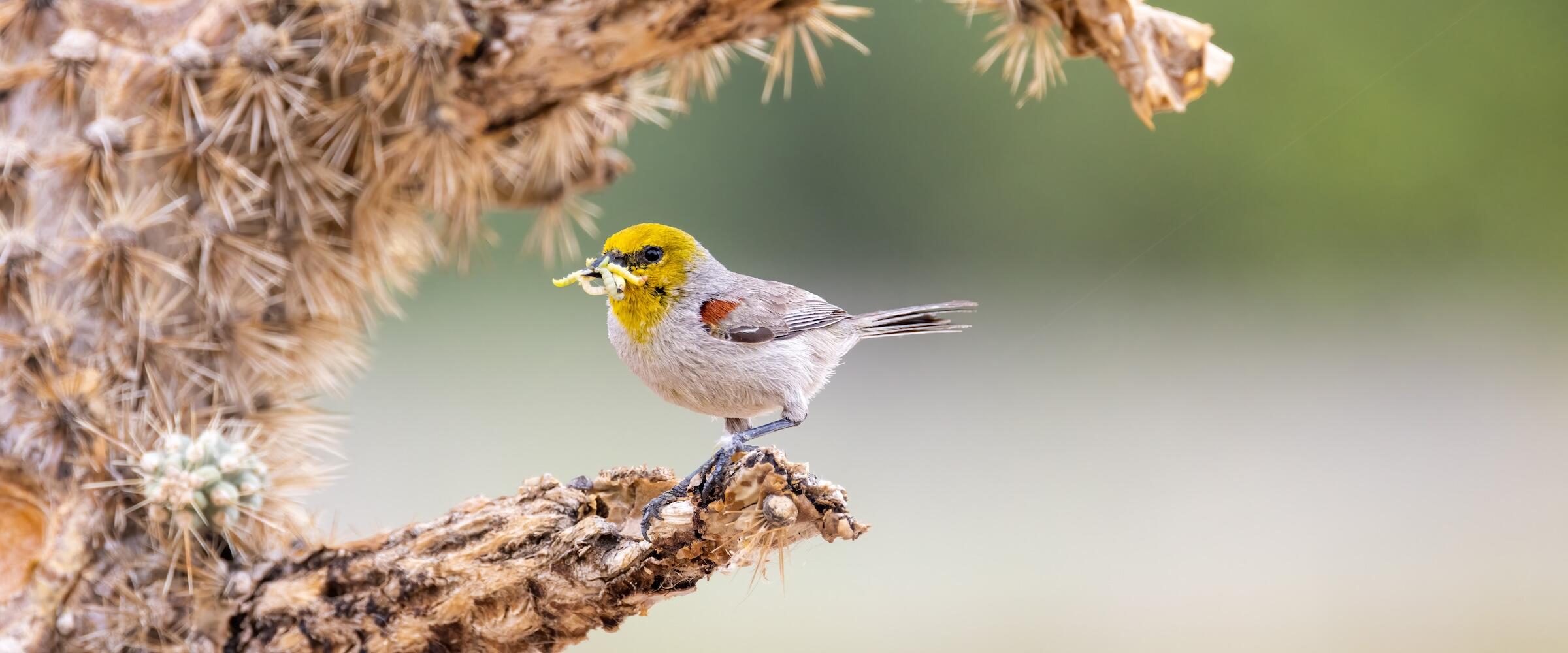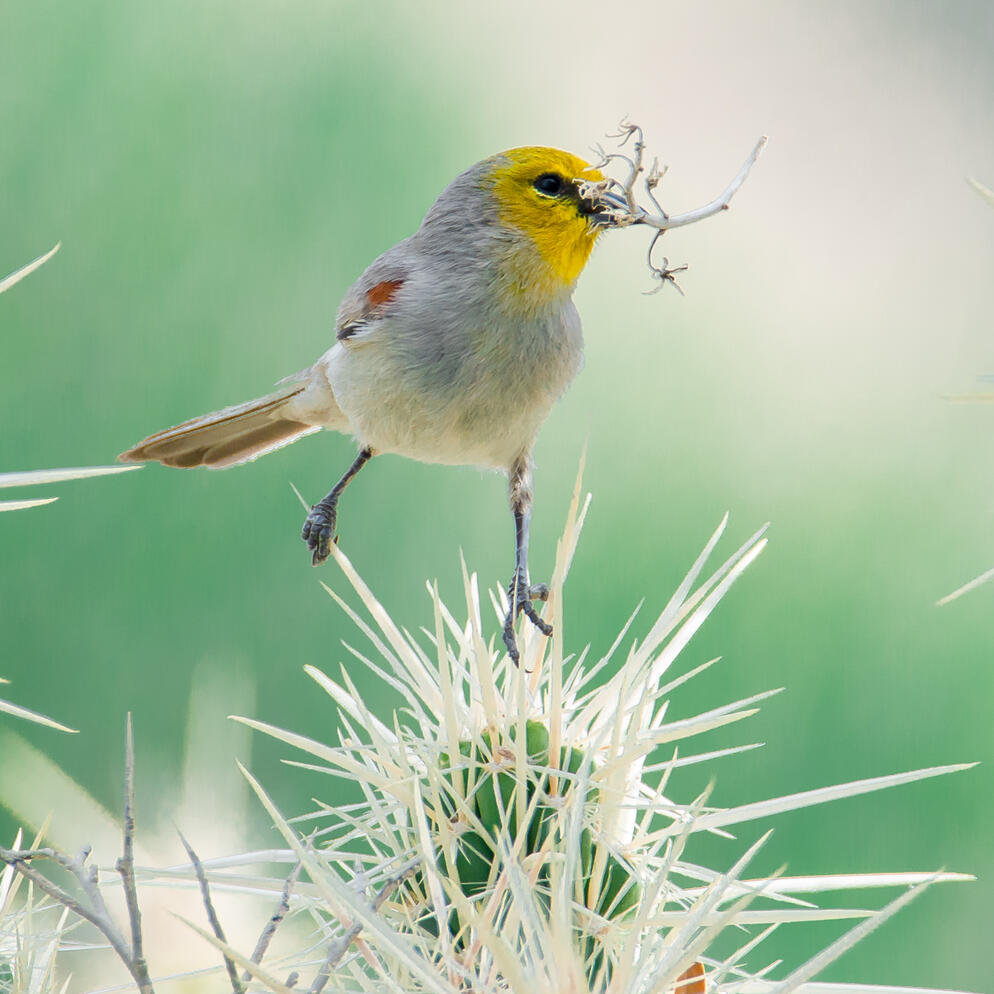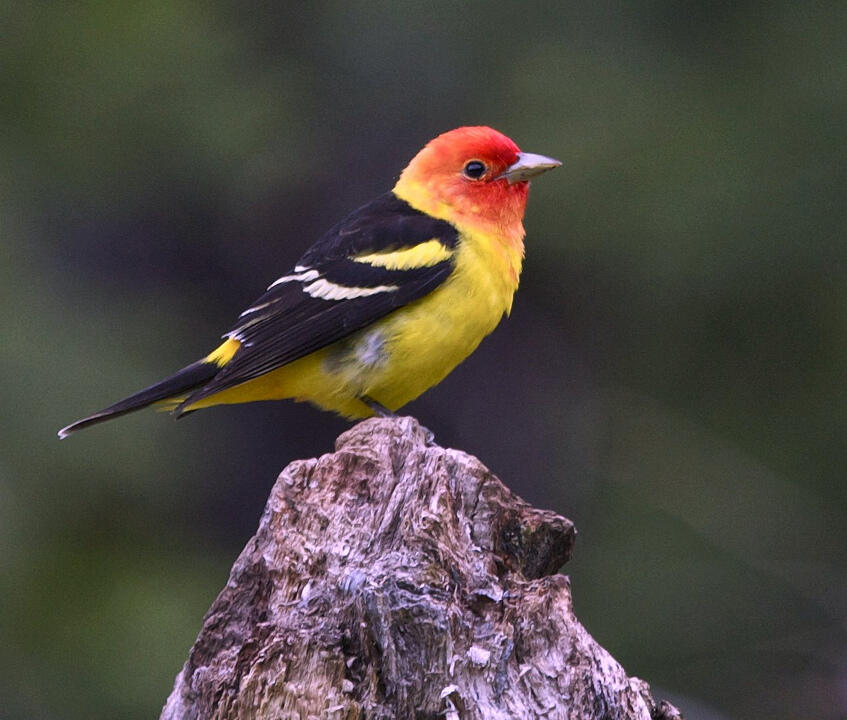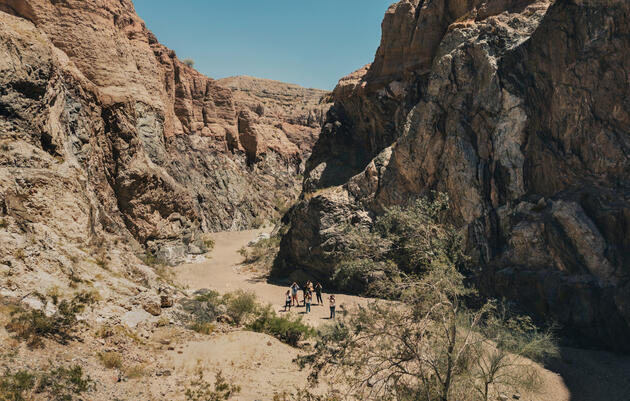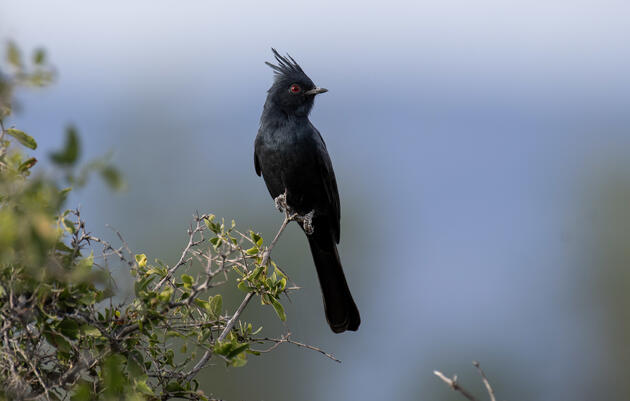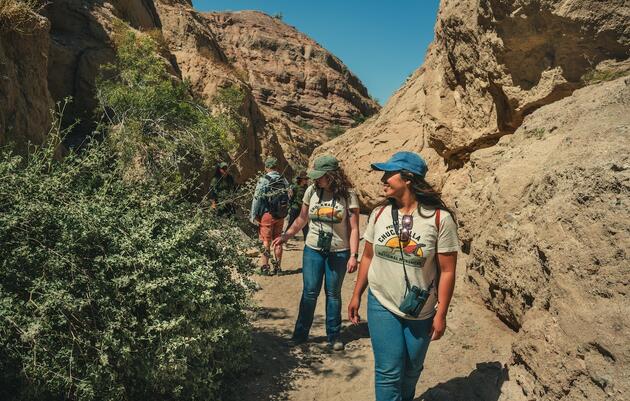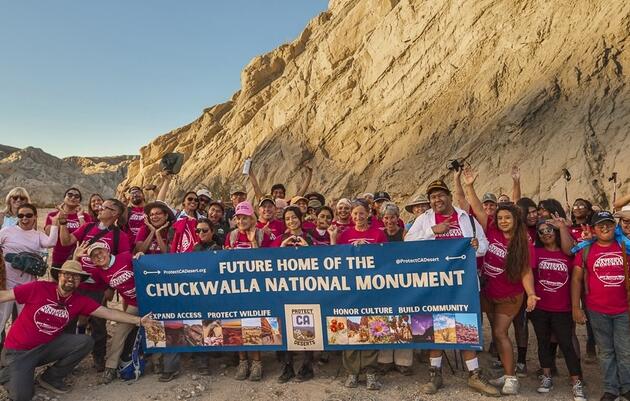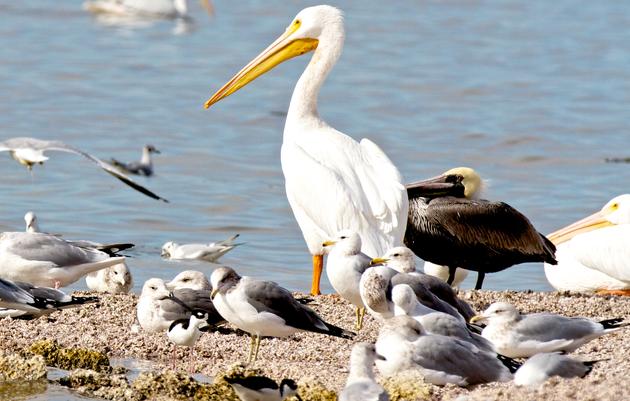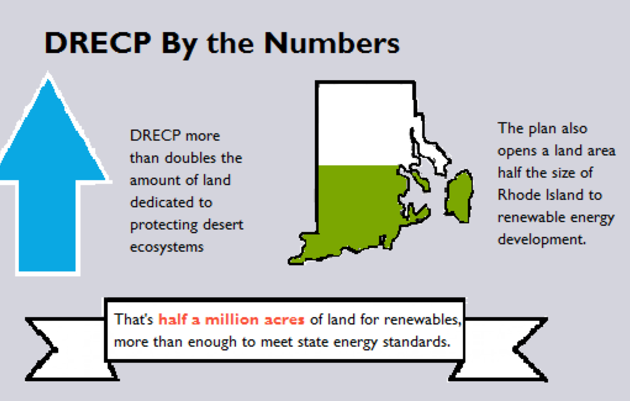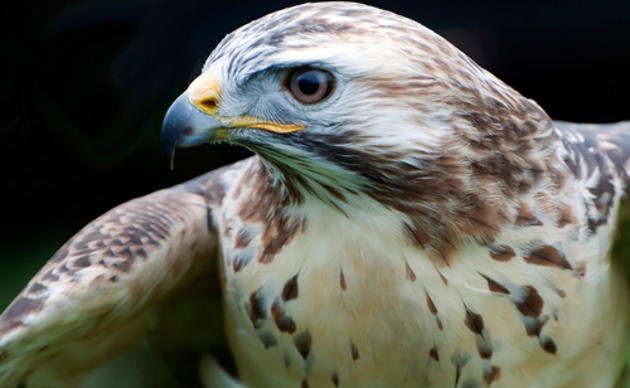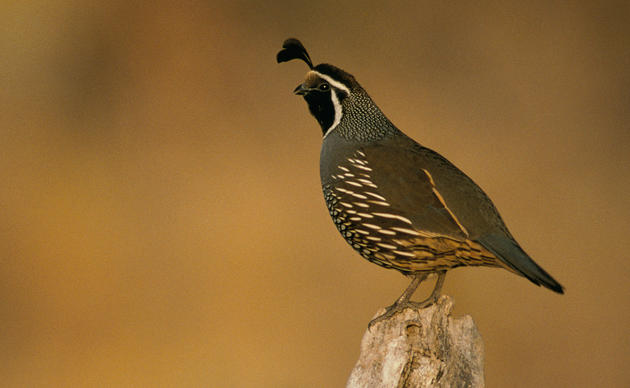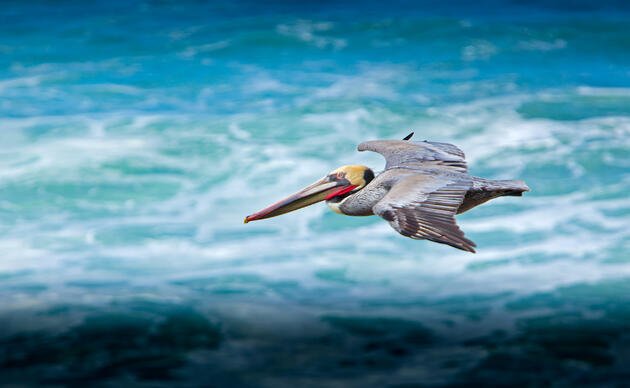The Chuckwalla National Monument was designated on Tuesday, January 7, 2025! Its final boundaries protect more than 624,000 acres of vital public land in the Southern California desert. This designation delivers lasting benefits to birds, other wildlife, and people, including the preservation of biodiversity, stimulation of local economies, and much-needed equitable access to nature for residents of the Eastern Coachella and Imperial Valleys. This is clearly land worth protecting.
Lasting Benefits
The designation brings enduring benefits to birds, wildlife, and people by:
- Safeguarding critical biodiversity.
- Stimulating local economies.
- Ensuring equitable access to nature for local communities and future generations.
Explore Chuckwalla
Why Chuckwalla National Monument Matters
Cultural Significance
Petroglyphs on the rocks surrounding the palm-fringed oases within the boundaries of the monument attest that the area has been a special place to the ancestors of the local Cahuilla, Chemehuevi, Mohave, Quechan, and Serrano peoples for some 10,000 years.
Protecting Biodiversity in the Face of Climate Challenges
Located at the intersection of the Mojave, Sonoran, and Colorado Deserts, this region is a biodiversity hotspot, home to the Chuckwalla lizard, bighorn sheep, desert tortoises, American badgers, desert pupfish, and many other rare and endangered species. Resident and migratory birds such as Golden Eagles, Phainopepla, Verdin, and Greater Roadrunners depend on the unique habitats within the Chuckwalla area. Rising temperatures and shifting weather patterns make it harder for birds to find food, reproduce, and sustain healthy populations, impacting not just local wildlife but ecosystems across the continent. Protecting lands within the monument helps:
- Contribute to climate resilience and take climate action through the Desert Renewable Energy Conservation Plan (DRECP).
- Sustain healthy bird populations.
- Contribute to ecosystem stability across the continent.
- Aligned with Renewable Energy Goals.
The monument complements the Desert Renewable Energy Conservation Plan (DRECP) by:
- Protecting biologically, culturally, and historically significant lands.
- Excluding areas designated for renewable energy development.
- Striking a balance between conservation and renewable energy transition.

A Diverse and Thriving Desert Ecosystem
Unique Plants
Iconic birds and other wildlife aren’t the only examples of rich biodiversity to celebrate within the designated monument! The region is also home to a host of unique, rare, and endangered plants, including:
- Endemic: Spiny-leaved Orocopia sage.
- Endangered: Alverson’s foxtail cactus
- Rare: Mecca-aster (exceptionally rare species found only in Riverside County’s Mecca Hills and Indio Hills), and Orcutt’s woody aster (native to southern California and northern Baja California).
Protecting these habitats ensures the survival of these remarkable plants, many of which are found nowhere else, and underscores the incredible biodiversity of the Chuckwalla area.
Moab to Mojave Conservation Corridor
With the designation of Chuckwalla National Monument and the addition of other national monuments in recent years, over 2.8 million acres of protected public land have been incorporated into the Moab to Mojave Conservation Corridor. Chuckwalla is part of a larger conservation effort:
- Moab to Mojave Conservation Corridor Size: 18 million acres, stretching 600 miles from Utah to California.
- Features: Links four national parks (Joshua Tree, Canyonlands, Capitol Reef, Grand Canyon) and five national monuments, as well as preserves and recreation areas.
- Significance: The largest connected and protected landscape in the contiguous U.S.

A Collective Effort: Protect California Deserts
Audubon co-led the Protect California Deserts Coalition alongside more than a dozen Tribes, organizations, and community partners, working tirelessly to conserve these vital desert landscapes, with support from 300+ businesses and Chambers of Commerce, and 370+ scientists. Additionally, a bipartisan resolution passed by the California Legislature further highlighted the importance of protecting these lands.
This victory would not have been possible without the coalition’s on-the-ground work, calling on elected officials for the monument’s creation, along with support from residents of the eastern Coachella Valley and surrounding areas. We’re so proud to have played a role in this historic effort and to see Chuckwalla National Monument officially protected for communities, birds, and future generations.

Ready to Experience Chuckwalla National Monument in Real Life?
The Southern California monument includes breathtaking destinations like Painted Canyon and Box Canyon in the Mecca Hills area, Corn Springs campground, and the historic Bradshaw Trail. These lands are already beloved for outdoor activities such as hiking, camping, picnicking, stargazing, and recreational off-highway vehicle (OHV) touring on legally authorized routes.
Chuckwalla Desert Bird Ambassadors
Related
Audubon CA joined Tribal Leaders, Elected Officials, and Residents to Support a Chuckwalla National Monument at DOI Listening Session
More than 700 supporters attended to urge protection of this unique California desert region for biodiversity, cultural heritage, economic benefits, and more.
Audubon CA Thanks Secretary Haaland for Visit to Proposed Chuckwalla National Monument
Coalition urged the protection of region's biodiverse desert land for local communities and future generations
There's Momentum in DC to Designate the Chuckwalla National Monument!
Audubon and broad coalition of Tribal, community and conservation organizations call for protection of more than 620,000 acres of California desert
Securing a home for birds at the Salton Sea
Audubon California is helping shape the future of the Salton Sea, California’s largest lake and a key stopover for millions of birds each year.
Desert Renewable Energy Conservation Plan
The plan, also known as DRECP, will protect our deserts while fighting against climate change.
How you can help, right now
Get Audubon CA in Your Inbox
Our newsletter is fun way to get our latest stories and important conservation updates from across the state.
Donate to Audubon
Help secure the future for birds at risk from climate change, habitat loss and other threats. Your support will power our science, education, advocacy and on-the-ground conservation efforts.
HOTSPOT: Flyover of California's Birds and Biodiversity
California is a global biodiversity hotspots, with one of the greatest concentrations of living species on Earth.

